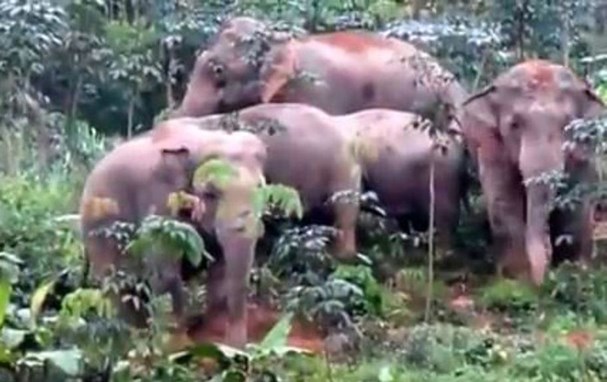[ad_1]

There are 13-15 wild elephants in Nghe An
A survey found that there are 13-15 wild elephants in Nghe An, including 11-13 living in Pu Mat National Park. There are two groups of elephants, one in Khe Thoi in the national park’s core area, and another in the buffer zone.
In recent years, the second group of elephants has entered cultivated areas and residential quarters, damaging crops and houses and threatening people’s lives.
An official of Phuc Son commune’s authorities said the elephants find themselves in a tight corner as the forest area has shrunk and the food scarce.
In the past, there were many bamboo and banana trees, a favorite food for elephants, in Phuc Son commune. But the trees have become scarce, and forests have been used for other purposes.
Some years ago, Phuc Son commune allocated 4,000 hectares of forest to enterprises to develop rubber plantation projects.
|
In the past, there were many bamboo and banana trees, a favorite food for elephants, in Phuc Son commune. But the trees have become scarce, and forests have been used for other purposes. |
A forest ranger in Anh Son district said when he saw the herd of elephants 20 years ago, he found them very ‘gentle’. But now, they seem to be aggressive, damaging sugar cane and crops, though locals try every possible way to drive them away.
“They seem to be too hungry. That is why they have become so stubborn,” he said.
Pu Mat National Park is classified by MARD (the Ministry of Agriculture and Rural Development) as one of three elephant conservation centers in Vietnam.
According to Pu Mat’s director Tran Xuan Cuong, 1,500 hectares of bamboo could serve as food for elephants but the trees have have been chopped down to make room for rubber fields.
As it is more difficult to look for food, elephants have to walk farther for food or enter residential quarters to eat crops. In 2010, a male elephant was shot dead in Phuc Son’s forest.
There are now only six elephants. They visited Phan Van Dai’s house in Phuc Son commune. “Though we did everything to drive them away, they stayed and only left after eating up bananas and damaged acacia trees,” Dai said.
“There is a trench to prevent elephants, but it cannot help,” he said.
Luong Van Tinh, also from Phuc Son commune, said elephants have visited residential quarters regularly in recent years.
“They not only damage crops, but also destroy houses and kill people,” he said. In 2011, the elephants killed one forest plantation worker. In 2013, another person was killed.
Elephant sanctuary established in Quang Nam
Elephants sighted in Ha Tinh national park
Thien Nhien
[ad_2]
Source link
